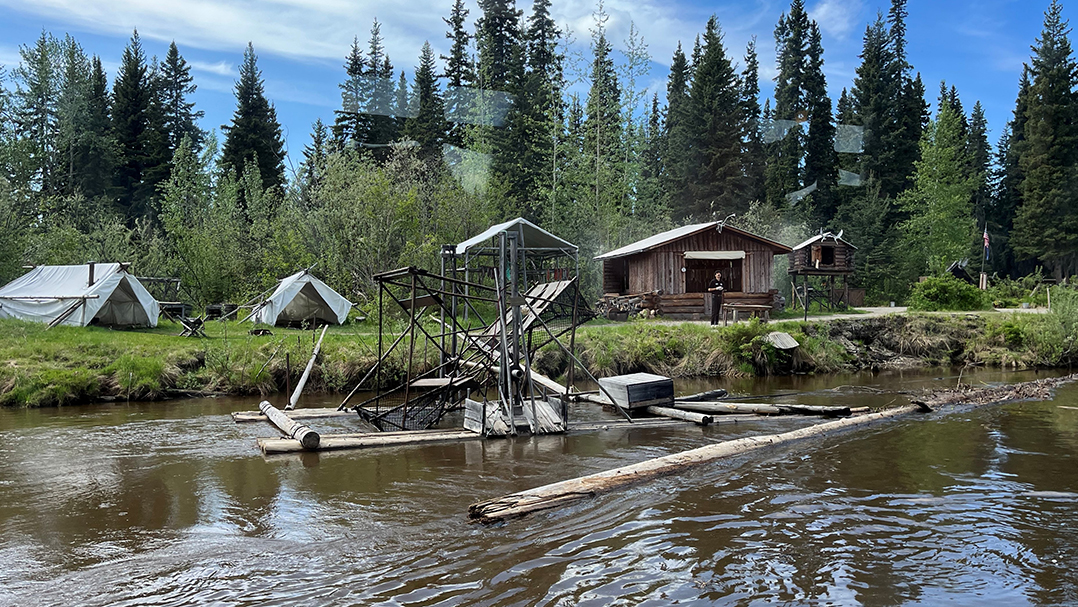Today, in our continuing tour of Alaska, we travel along the Chena River near Fairbanks, learning about the native culture and what developed from it.
Fairbanks is in central Alaska, about 100 miles south of the Arctic Circle. Most scholars believe the surrounding area was first populated approximately 12,000 years ago by Athabaskans, descendants of people who had crossed what was then a land bridge between Siberia and what is now Alaska. Athabaskans were the original people of the Alaskan interior. They were semi-nomadic, hunting caribou and moose, trapping small animals and catching salmon in fish wheels. They established semi-permanent settlements, typically along a river, and domesticated dogs, which they used for transportation and hunting. Today, about 16.000 Athabaskans live in Alaska.
In the early 1950s, Jim Binkley, whose father had established an Alaskan freight-hauling business, built a paddlewheel boat named Discovery in his backyard and started giving tours on the Chena River from a spot near Fairbanks. Today, descendants of Binkley operate three boats on the Chena River. The newest, Discovery III, has a capacity of 900 people. Three-hour tours provide information about the area, including its original people and wildlife. The boats stop at the Trail Breaker Kennel along the river, where the widower and daughter of the late Susan Butcher, who won the Iditarod race four times, demonstrate how their sled dogs are trained. The boat also stops for an extended visit at the Chena Village, a re-created Athabaskan village, complete with reindeer (domesticated caribou). Athabaskan guides talk about the lifestyle of their ancestors and demonstrate such things as how to prepare salmon caught in a fish wheel for the winter and how to survive when the temperature gets as low as 60 degrees below zero. Visitors can speak with the guides and observe dogs from Susan Butcher’s Trail Breaker Kennel.







